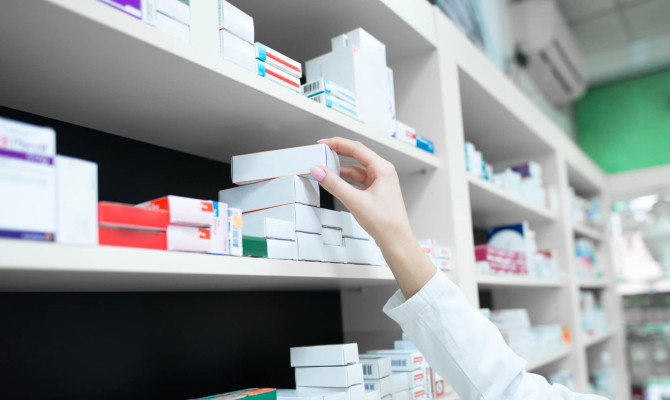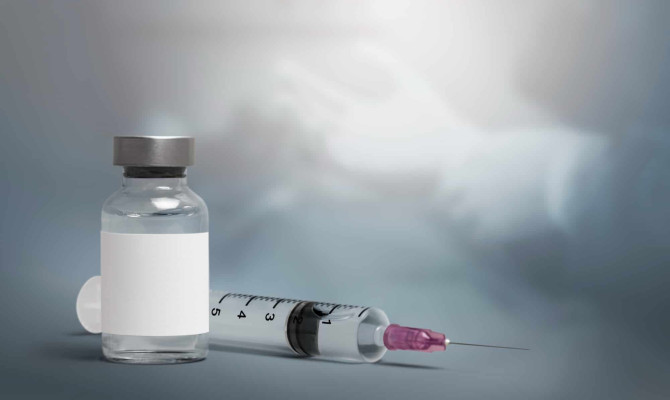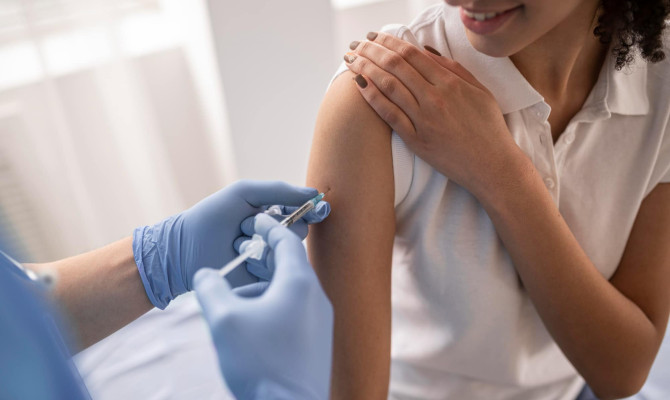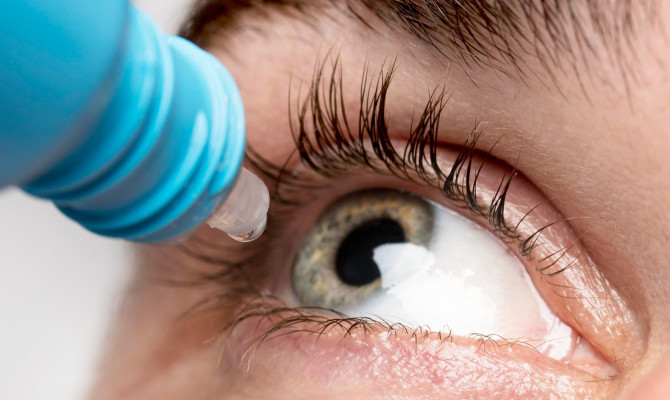Cequa: Uses, Side effects, and Precautions

- Cequa
- 17 Aug 2023
Overview
What is Cequa?
Cequa known as an cyclosporine ophthalmic solution helps in producing natural tears in the eye. It is a topical solution. Hence, it is utilized for the treatment of dry eye disease.
Cequa is a calcineurin inhibitor acting as an immunosuppressant. Cyclosporine is the active component in Cequa. Cyclosporine is in the form of white powder that is insoluble in water. Cequa is utilized as a sterile, translucent, colorless eye solution for topical use.
Cequa is an anti-inflammatory agent which is a subtype of immune modulation eye drops. The tear producing glands will be damaged if the ocular surface is inflamed. Cequa eye drops work to reduce this inflammation.
Reduced inflammation will promote better functioning of tear glands and help in healing of the eye surface. Such type immune modulating eye drops can be used to treat dry eye in many autoimmune diseases like Sjögren’s syndrome1Overview| Researched based study from Chronicdryeye.net
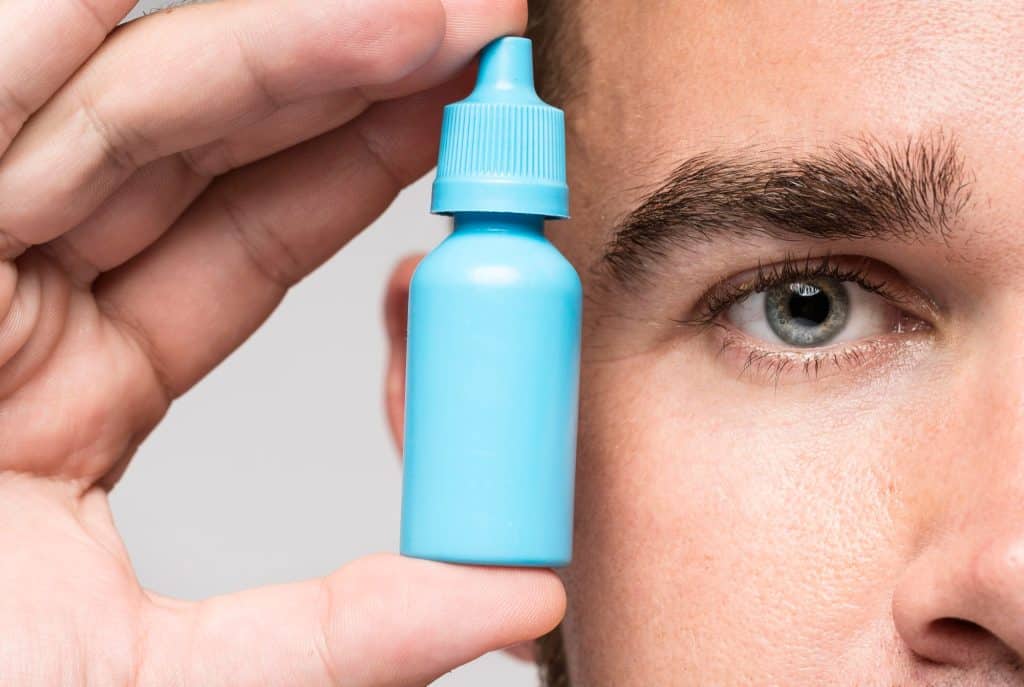
Uses
Uses of Cequa
To treat Dry eye
- Cequa is used in the treatment of chronic dry eye disease aka keratoconjunctivitis sicca. Cequa is an FDA approved drug to relieve the symptoms of dry eye.4Uses| Researched based study from Fda.gov
- Dry eye causes abnormalities in the fluid layer covering the ocular surface. This fluid filled layer is called a tear film. Tears are composed of oil, water and mucus. If the tears do not have sufficient quantities of these components then the lubrication and moistness of the eye is lost.
- OTC and prescription eye drops, such as artificial tears, Xiidra (lifitegrast), Cequa (cyclosporine), are useful treatment modalities for dry eye.
Side effects
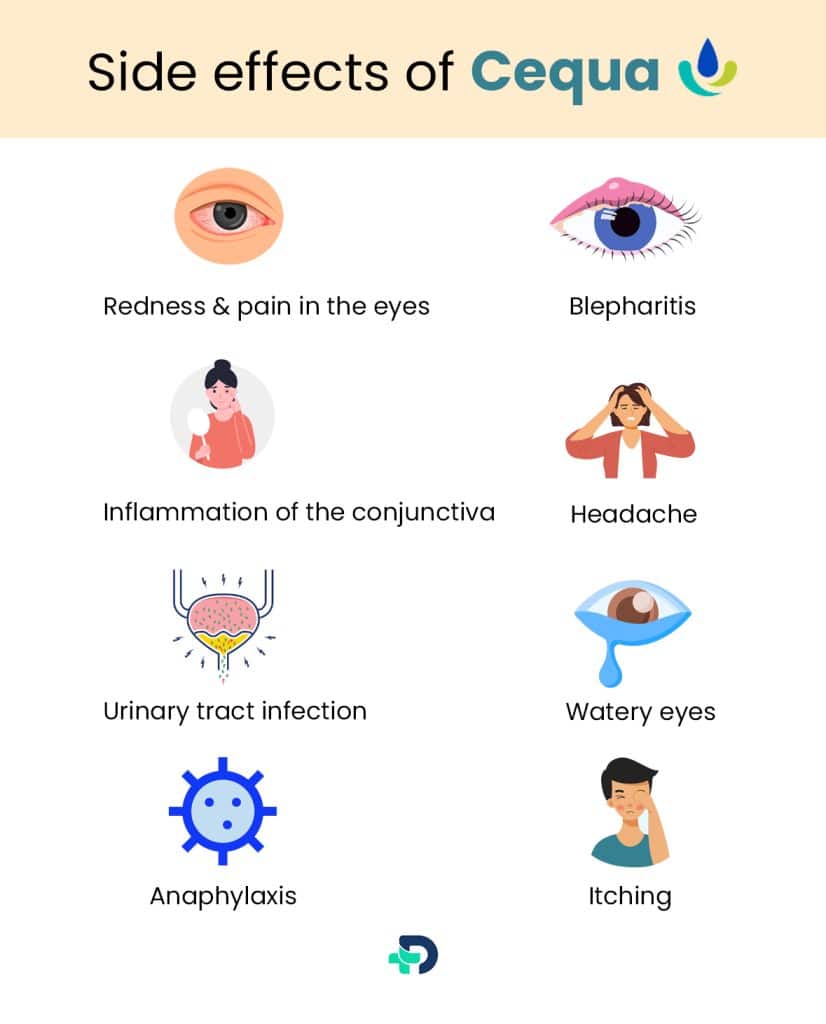
Side effects of Cequa
Not everyone will experience these adverse effects and the range of severity might vary. The possible side effects are:
- Redness and pain in the eyes
- Blepharitis
- Inflamed Conjunctiva
- Headache
- Anaphylaxis
- UTI
- Watery eyes
Redness and pain in the eyes
- It can be due to the reaction of active ingredients of the drug.
- It is one of the most common side effects of Cequa. Redness is usually due to blood vessels, dilation of the eye that promotes increased flow of blood.
Blepharitis
- Your eyelids may feel heavy and itchy due to inflammation.2Side effects| Researched based study from Mayoclinic.org
Inflammation of the conjunctiva
- It appears as a thin clear transparent tissue covering the eye. With conjunctival inflammation you may experience irritation, redness and swelling of the eye.
Headache
- Headache was seen as a side effect in about 1-5% of the people.
Urinary tract infection
- UTI 3Side effects| Researched based study from Clevelandclinic.org was not commonly seen but it did occur in a few people who used Cequa.
Watery eyes
- This can be seen due to overproduction of tears.
Anaphylaxis
Although it is rare to note allergic reaction with Cequa but if you experience any anaphylactic symptoms you must immediately contact your doctor.
The symptoms include:
- Rashes
- Hives
- Blistered skin
- Itching
- Chest congestion
- Hoarseness
- Breathing difficulty
- Bumpy skin around the face, mouth, lips and tongue.
The less common side effects include:
- Stinging
- Sticky eyelashes
- Yellow fluid discharge from the eye
- Colored Halos
- Sore throat
- Cough
- Bladder pain3Side effects| Researched based study from Clevelandclinic.org
Share with your doctor if you see any of the side effects.
Dosage
Dosage of Cequa
Regular dose
- Cequa comes with the strength of 0.9 milligrams per milliliter (mL). One drop of Cequa can be administered twice a day at every 12-hour interval.4Dosage| Researched based study from Fda.gov
- Cequa comes as a single-use 0.25ml vial. Cequa can be used simultaneously with other artificial tear solutions with a 15 minute gap between the two products.
- Make sure to discard the vial after taking the dose. Don’t reuse the vial even if some amount of drug is left. It is because the drug has lost the preservatives that keep Cequa fresh. Reusing the vial might cause bacterial contamination leading to infections.
Missed dose and Overdose
- If you miss a dose, take it as soon as you remember.
- If you overdosed Cequa eye solution then you must immediately consult your ophthalmologist.
How long does it take to work?
- Cequa starts to work usually after 4-6 months of use. A brief addition of a topical corticosteroid along with long-term treatment of Cequa regimen could give symptom relief and minimize irritation.
- Since chronic dry eye is a long term problem, patients may use it indefinitely under the guidance of a doctor.
Storage
Storage of Cequa
- Store Cequa at 20°C to 25°C (68°F to 77°F). Single use vials must be stored in the original foil packet.
- Cequa is not yet approved for use in children.4Storage| Researched based study from Fda.gov
Precautions
Precautions and warnings
Certain precautions include:
Avoid touching the tip
- You must avoid touching the tip of the vial to prevent ocular damage and contamination.
Use of contact lenses
- Cequa must not be used when you are wearing contact lenses or if you have any signs of eye infection. If you opt to wear contact lenses, you must remove your lenses before using Cequa. Reinsert your contact lenses after 15 minutes of using Cequa.
Operating of the vial
- Do not touch or press the tip of the vial to any surface of the eye to avoid contamination.
During Pregnancy
- Administration of Cyclosporine at dosages ranging from 1,800 to 6,400 times (greater than the maximum recommended dose of Cequa) did not show any adverse effects on the developing offspring.4Precautions| Researched based study from Fda.gov
- Cyclosporine administration at dosages equal to 3,200 and 21,000 times the highest recommended amount of Cequa did show an effect on the growth of the fetus. There was an elevated susceptibility to low birth weight, issues with bone development, increased chance of mortality.
if on Birth control
- If you’re sexually active and are thinking of conceiving then you must talk to your doctor about it.
If Breastfeeding
- In animal experimentation, lactating animals were administered cyclosporine by mouth. The newborn did not develop any side effects. If you’re Breastfeeding or lactating then talk to your doctor before you start using Cequa.
Vs Restasis
Cequa vs Restasis
- Both Restasis and Cequa are prescription eye drops composed of cyclosporine. They are used to elevate production of tears in people suffering with dry eye disease aka keratoconjunctivitis sicca. Both are calcineurin inhibitor immunosuppression.
- However, Cequa has a novel nano micellar technology. It has cyclosporine A that enables delivery of higher concentrations of the drug into the eye. While Restasis is not manufactured with the help of Nano micellar technology.
- The advantage of Nano micellar technology is that it can help in the delivery of mild water-soluble ophthalmic solutions and protect the molecules of the drug.
- Cequa was proved to cause eye pain and conjunctival hyperemia in 22% of patients. Restasis caused tingling and burning sensation upon installation in 17% patients.
- Cequa is a clear watery solution which is colorless. Restasis is an oil emulsion.
- Cequa is available in .09% strength. Restasis is available at .05%.5Vs Restasis| Researched based study from Drugs.com
Interactions
Cequa Drug interactions
Usually the topical drugs don’t have any interactions with other drugs. But it is important that you inform the doctor if you’re taking any ayurvedic medicines, herbal supplements, Vitamin supplements or anti cancer drugs. Your doctor Will thoughtfully evaluate and guide you for better results.
Bottom line
The Bottom Line
Before you start any treatment of eye disease, it is important for you to inform your doctor about all the health conditions and medication, supplements, herbs, vitamins that you are taking.
Keep your eyes lubricated and moist to avoid dry eye disease. A thick lubricated layer of eye drops will help in the treatment of chronic dry eye disease.
Cequa is comparatively less popular than other drugs. Presently there are no generic alternatives for Cequa.
Any feedback on this article?
 This Articles content was accurate
This Articles content was accurate Very Informative Article
Very Informative Article I have a question or a comment
I have a question or a comment
 This article contains inaccurate content
This article contains inaccurate content This article was not helpful
This article was not helpful I have a question or a comment
I have a question or a comment
We appreciate your helpful feedback!
Checkout our social pages
References
-
ChronicDryEye.net
Sjogren's Syndrome and Chronic Dry Eye | Overview
-
Mayo Clinic
Cyclosporine (Ophthalmic Route) | Side effects
-
Cleveland Clinic
Cyclosporine ophthalmic solution | Side effects
-
U.S FOOD AND DRUG ADMINISTRATION
CEQUA™ (cyclosporine ophthalmic solution) 0.09%, for topical ophthalmic use | Uses | Dosage | Precautions
-
Drugs.com
What is the difference between Cequa and Restasis? | Vs Restasis













